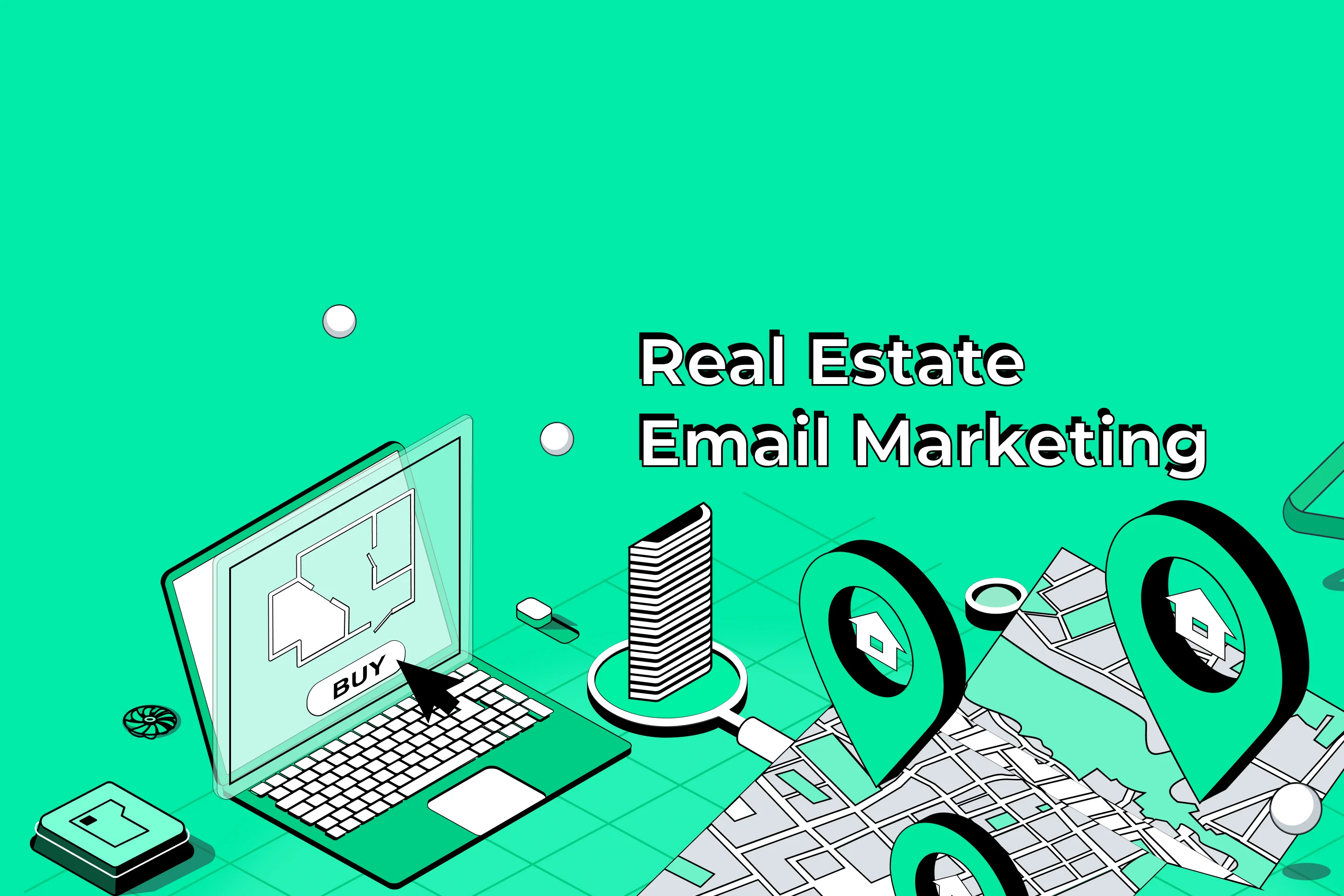The Best Subject Lines Reverse Engineered (20 Examples)
Email has come a long way since its humble beginnings in 1971.The first email consisted of a single line of text: ?QWERTYUIOP.?And with this arbitrary bumble of keystrokes, computer engineer Ray Tomlinson began a revolution in written communication that took the globe by storm.Ray’s email didn?t have a subject line.But he was sending it to himself, he could be pretty certain it was okay to open.By the end of 2019, the number of email users is predicted to increase to over 2.9 billion.That’s over one-third of people globally ? possibly a little more than Ray expected.As email saw commercial development, the subject line quickly became a core element of the format.Subject lines allowed users to attach short descriptions to the messages they were sending, so recipients could distinguish between them. Without subject lines, we would have had to open every email we got to see what was inside.This core purpose of the subject line has not changed much. But we now receive an average of 88 emails each day. This puts added pressure on subject line creation. We need to be able to see what the emails in our inboxes concern, so we know what to do with them (reading 88 complete emails daily would be highly impractical).Subject lines need to reflect your email contents in some way, so the people who could benefit the most are aware that this value is contained inside.But with increased use also comes increased competition. As well as their primary purpose, email subject lines have gained an equally significant one. With so many emails appearing in our inboxes, making it impossible to read them all, the subject line has become the primary factor in whether an email gets opened.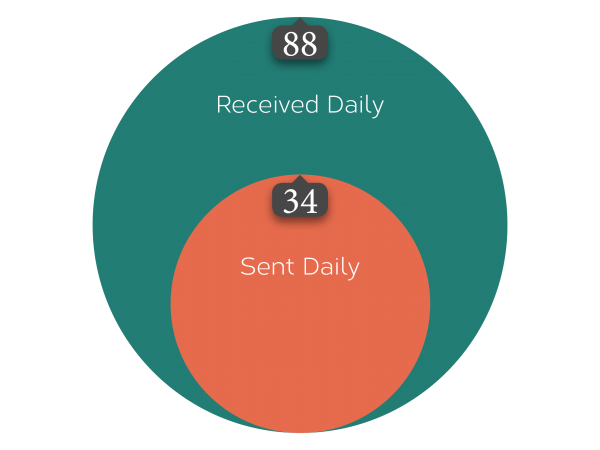
How many emails do you receive each day?Even if your number is less than average, you probably don?t open every one.The average amount of emails that get opened hangs at a figure of 24.7% for 2017. What’s worse, 33% of users report opening emails based solely on the subject line.Email subject lines are no more simply headlines telling your recipients what they will find when they open. They are the primary factor in your customers? decisions to open and give you the power to engage them, or close and miss out on the great value you offer with your emails.Two Primary Purposes of Subject Lines
- Subject lines tell recipients what is ?inside? an email, so the people who could benefit most from it are aware of what it contains.
- Subject lines convince, intrigue, persuade or influence your recipients to open your emails, and generally draw attention to stand out more in the inboxes of recipients.
You don?t just need ?made-for-you? subject line templates, you need to know why they work and how to use this knowledge to adapt examples to your own purposes.In this post, we reverse engineer 7 subject lines that work. We show you why they work and how to take advantage of key tactics to get your recipients engaged.We also give you 20 original subject line examples to make your next email campaign a success.
Curiosity Subject Lines
 (Source: Stock.adobe.com)Curiosity killed the cat. But it can also help you write killer subject lines.Instilling a sense of curiosity in your reader works because it is such a strong emotion. They don?t talk about it in terms of pet-homicide for no reason. It has that pull that makes us do things that defy purely logical explanation. It is the reason that the lonely girl in the horror film walks up to the window of her house even though you are screaming at her to stop. Curiosity draws us in.Crafting curiosity is about not giving too much away. It is about leaving breadcrumbs for your reader that are ambiguous enough to make them want to know more but which don?t give them the full story.Though this seems simple enough, curiosity subject lines are difficult to get right, because their effect must feed into and be boosted by the rest of your email campaign. It is no good dropping one breadcrumb and then guessing the rest of your way back home. You need to afford curiosity throughout the customer journey.Real estate company Zillow sent emails to its subscribers with the following subject line:?What Can You Afford??The subject line creates curiosity to open because it is unreasonably vague?generating mental replies such as ?of what?? and ?what do you mean?? We all have that sense that we want to resolve unanswered questions; with subject lines, it is no different. Clicking to open relieves the unease of not knowing. When you do open, you know you will likely find the answer you need.Our obsession with money makes afford a great word to use when talking about prices because cost is objective, affordance is directly related to us. If, instead, Zillow used the subject line?Do You Want to Know Our Prices??it would not have the same impact. We do not care about prices and cost. Tell us the prices of all the Lamborghinis in the world, it does not mean we can afford them. If you are going to tell us about what we can afford… what will give me great value… well? OK.?And Zillow did not stop there. They used curiosity to filter the user all the way from their subject line through to their website. Within their email, they offered more in-depth descriptions of what recipients would find when they clicked through to the site. The real value?the affordability calculator and associated offers?always lay one breadcrumb (or one *click*) beyond the user’s reach, each time strengthening engagement with the brand and desire for value through delayed gratification.Curiosity Subject Line Tips:
(Source: Stock.adobe.com)Curiosity killed the cat. But it can also help you write killer subject lines.Instilling a sense of curiosity in your reader works because it is such a strong emotion. They don?t talk about it in terms of pet-homicide for no reason. It has that pull that makes us do things that defy purely logical explanation. It is the reason that the lonely girl in the horror film walks up to the window of her house even though you are screaming at her to stop. Curiosity draws us in.Crafting curiosity is about not giving too much away. It is about leaving breadcrumbs for your reader that are ambiguous enough to make them want to know more but which don?t give them the full story.Though this seems simple enough, curiosity subject lines are difficult to get right, because their effect must feed into and be boosted by the rest of your email campaign. It is no good dropping one breadcrumb and then guessing the rest of your way back home. You need to afford curiosity throughout the customer journey.Real estate company Zillow sent emails to its subscribers with the following subject line:?What Can You Afford??The subject line creates curiosity to open because it is unreasonably vague?generating mental replies such as ?of what?? and ?what do you mean?? We all have that sense that we want to resolve unanswered questions; with subject lines, it is no different. Clicking to open relieves the unease of not knowing. When you do open, you know you will likely find the answer you need.Our obsession with money makes afford a great word to use when talking about prices because cost is objective, affordance is directly related to us. If, instead, Zillow used the subject line?Do You Want to Know Our Prices??it would not have the same impact. We do not care about prices and cost. Tell us the prices of all the Lamborghinis in the world, it does not mean we can afford them. If you are going to tell us about what we can afford… what will give me great value… well? OK.?And Zillow did not stop there. They used curiosity to filter the user all the way from their subject line through to their website. Within their email, they offered more in-depth descriptions of what recipients would find when they clicked through to the site. The real value?the affordability calculator and associated offers?always lay one breadcrumb (or one *click*) beyond the user’s reach, each time strengthening engagement with the brand and desire for value through delayed gratification.Curiosity Subject Line Tips:
- Don?t give away too much information / be vague (e.g. generic statements and questions).
- Make it personally relevant to your buyer persona (e.g. what do your subscribers need??houses they can afford).
- Strengthen the effect across multiple steps (e.g. give a little more information each time your user clicks through to a new step).
5 Curiosity Subject Line Examples:
- Eye-Opening Facts About _____ Will Make You Rethink
- Your Customers Are Talking
- Not Getting Enough Email Leads? Get This 1 Thing Right
- Is _____ Getting You Nowhere?
- I?m In Your City, Let’s Meet
Urgency Subject Lines
 (Source: Stock.adobe.com)Urgency subject lines can be extremely powerful and used at the right time, can do wonders for your email marketing campaign. Subject lines that create urgency tell the recipient they must ?act now,? making them more likely to open emails the moment they receive them. According to HubSpot, a subject line that creates urgency and exclusivity can improve your open rate by up to 22%.The most common way to create urgency with your subject lines is to make the recipient feel they could ?lose out? if they do not open the email and see what’s inside. This can be achieved by making your recipient aware of either the time limits on your offers or the scarcity of your products.Making your customers aware of the limited time for which they can gain access to a promotion or product can increase your open rates significantly. Just adding the word ?tomorrow? in your subject line could increase open rates by 10%.Digital Marketer used the following subject line, inviting recipients to participate in a workshop:?Your private invitation expires tomorrow night?This subject line got emails opened because it activated subscribers as leads who wanted to claim their invitations before their time was up. Use of the descriptor ?private? amplifies the exclusivity or the FOMO ?fear of missing out? that a limited time offer implies. Shorter time limits have been shown to increase conversions, click-throughs, and opens. They give customers less time to reconsider or forget about your offer of value before they take advantage of it.The same psychological triggers can be pulled by telling your subscribers about the limited number of products or discounts you offer. This is the method used most by Amazon stores and often seen in social media marketing. It is, of course, human nature to act on something that is in short supply.Below is an example from the AXGIO Amazon product page showing the Vision Virtual Reality Headset. In big red font, it clearly shows a limited stock of 19 products. Like a Boxing Day sale, it tells us that we need to ?BUY, BUY, BUY,? before all the good deals are gone.
(Source: Stock.adobe.com)Urgency subject lines can be extremely powerful and used at the right time, can do wonders for your email marketing campaign. Subject lines that create urgency tell the recipient they must ?act now,? making them more likely to open emails the moment they receive them. According to HubSpot, a subject line that creates urgency and exclusivity can improve your open rate by up to 22%.The most common way to create urgency with your subject lines is to make the recipient feel they could ?lose out? if they do not open the email and see what’s inside. This can be achieved by making your recipient aware of either the time limits on your offers or the scarcity of your products.Making your customers aware of the limited time for which they can gain access to a promotion or product can increase your open rates significantly. Just adding the word ?tomorrow? in your subject line could increase open rates by 10%.Digital Marketer used the following subject line, inviting recipients to participate in a workshop:?Your private invitation expires tomorrow night?This subject line got emails opened because it activated subscribers as leads who wanted to claim their invitations before their time was up. Use of the descriptor ?private? amplifies the exclusivity or the FOMO ?fear of missing out? that a limited time offer implies. Shorter time limits have been shown to increase conversions, click-throughs, and opens. They give customers less time to reconsider or forget about your offer of value before they take advantage of it.The same psychological triggers can be pulled by telling your subscribers about the limited number of products or discounts you offer. This is the method used most by Amazon stores and often seen in social media marketing. It is, of course, human nature to act on something that is in short supply.Below is an example from the AXGIO Amazon product page showing the Vision Virtual Reality Headset. In big red font, it clearly shows a limited stock of 19 products. Like a Boxing Day sale, it tells us that we need to ?BUY, BUY, BUY,? before all the good deals are gone. (Source: universalbloggingtips.com)56% of millennials check their email regularly for the simple fear of missing out on something that they would kick themselves for later. This makes FOMO one of the primary factors motivating people to look at their email in the first place. If your subject lines convey the urgency with which they need to act to not miss out, you can reinforce this significant psychological connection to email and make the most of it for increased campaign success.Urgency Subject Line Tips:
(Source: universalbloggingtips.com)56% of millennials check their email regularly for the simple fear of missing out on something that they would kick themselves for later. This makes FOMO one of the primary factors motivating people to look at their email in the first place. If your subject lines convey the urgency with which they need to act to not miss out, you can reinforce this significant psychological connection to email and make the most of it for increased campaign success.Urgency Subject Line Tips:
- Tell your customers when time is running out on the value you offer with your emails. Show them they need to open your emails to reap their rewards.
- Tell your customers when you have a low number of products left to create FOMO (Fear Of Missing Out)and the urgency to open.
- Tap into the reasons your customers are checking their emails in the first place (for example, out of fear).
5 Urgency Subject Line Examples:
- $9 Today, $29 Tomorrow
- 1000 Copies Delivered, Running Out of Stock. Hurry.
- 100% Cashback Offer Till 3 pm Today.
- Enjoy 50% Off All Courses. First 1000 Registrations Only.
- Closing Tonight – Your Last Chance To Get 70% Off!
Offer Subject Lines
 (Source: Stock.adobe.com)Did you know that emails with the word ?free? in their subject line get 10% more clicks? Who doesn?t like free stuff? We all do.If you have something to offer to your reader, if the primary purpose is to give them value in the form of discounts, promotions, or content, for no extra cost, why not mention it in your subject line? Remember?the core purpose of subject lines is not just to get people to open your emails, but to convey the value they will gain when they do. If you are giving your subscribers something amazing, tell them.Sure, the word ?free? can sometimes put people off (and this has been much debated among marketers). Many may see ?free? and think ?too good to be true…? if the value you offer is unrealistic or phrased in an intimidating way. Though it is and has been a staple part of marketing vocabulary for years, it has also been misused by spammers and advertisers alike so we need to be aware of how we use it.When you are promoting a monetary offer your subject line should never be suspiciously centered around price, but the value the recipient will receive. You can detract from the negative associations of terms like ?free? or ?alert? by making sure you keep your subject line friendly and lighthearted so it does not seem too forceful or imposing, or in other words, ?too salesy.?You can also heighten the positive effects of the term free, which are that it excites your customer about the fact that they are getting something they didn?t think they could afford or wouldn?t otherwise buy for themselves. But the something is what you need to concentrate on to reinforce this and give your monetary offer an emotional connection.Though the word free gives us the information we need to be excited about an offer, we are only excited about what we will receive’saving money in itself is not particularly fun (as we all know).Making an offer with some flashy symbols (or emoticons) is a unique way to grab the attention of a reader towards your email and get them excited, detracting from any suspicion surrounding email-based offers of free goodies. You can add loads of stylish emoticons to your subject lines with DirectIQ.
(Source: Stock.adobe.com)Did you know that emails with the word ?free? in their subject line get 10% more clicks? Who doesn?t like free stuff? We all do.If you have something to offer to your reader, if the primary purpose is to give them value in the form of discounts, promotions, or content, for no extra cost, why not mention it in your subject line? Remember?the core purpose of subject lines is not just to get people to open your emails, but to convey the value they will gain when they do. If you are giving your subscribers something amazing, tell them.Sure, the word ?free? can sometimes put people off (and this has been much debated among marketers). Many may see ?free? and think ?too good to be true…? if the value you offer is unrealistic or phrased in an intimidating way. Though it is and has been a staple part of marketing vocabulary for years, it has also been misused by spammers and advertisers alike so we need to be aware of how we use it.When you are promoting a monetary offer your subject line should never be suspiciously centered around price, but the value the recipient will receive. You can detract from the negative associations of terms like ?free? or ?alert? by making sure you keep your subject line friendly and lighthearted so it does not seem too forceful or imposing, or in other words, ?too salesy.?You can also heighten the positive effects of the term free, which are that it excites your customer about the fact that they are getting something they didn?t think they could afford or wouldn?t otherwise buy for themselves. But the something is what you need to concentrate on to reinforce this and give your monetary offer an emotional connection.Though the word free gives us the information we need to be excited about an offer, we are only excited about what we will receive’saving money in itself is not particularly fun (as we all know).Making an offer with some flashy symbols (or emoticons) is a unique way to grab the attention of a reader towards your email and get them excited, detracting from any suspicion surrounding email-based offers of free goodies. You can add loads of stylish emoticons to your subject lines with DirectIQ. (Source: Author’s screenshot)Researchers have found out that visuals can increase people’s willingness to read a piece of content by up to 80%. Visuals gravitate the reader’s gaze toward them. We live in a highly visual world?especially in the digital space, it is important to make your emails visually striking when they are being seen on the same screens as everybody else’s.Clover used this concept in the subject line ?Free (Cool!) Clothes Alert,? by placing two emoticons either side of their proposition of value.
(Source: Author’s screenshot)Researchers have found out that visuals can increase people’s willingness to read a piece of content by up to 80%. Visuals gravitate the reader’s gaze toward them. We live in a highly visual world?especially in the digital space, it is important to make your emails visually striking when they are being seen on the same screens as everybody else’s.Clover used this concept in the subject line ?Free (Cool!) Clothes Alert,? by placing two emoticons either side of their proposition of value. (Source: blog.hubspot)Emoticons not only attract the eye but the mind…They are often considered unprofessional in business or commercial contexts. They have an air of lightheartedness that we only typically see in conversations between friends. This is why they detract so well from any negative connotations that the term Free may have. They create an air of personability and connectivity that makes you seem like a trustworthy, down-to-earth, and genuine business.Use of the term ?cool!? with the hyperbolic exclamation mark also heightens this sense of informality. Over-exaggeration and emoticons in texts and emails are perhaps most associated with? young people.But it is also the mark of young excitement?talking with a bunch of friends about what you are going to wear that night, and looking ?cool!? for your peers. This subject line, with its exaggerated use of these friendly, teenage elements, reinforces that excitement about being fashionable that we all had when we were teenagers. The incisive targeting of buyers? subconscious desires and nostalgia, as well as a great way to get noticed in the inboxes.Offer Subject Line Tips:
(Source: blog.hubspot)Emoticons not only attract the eye but the mind…They are often considered unprofessional in business or commercial contexts. They have an air of lightheartedness that we only typically see in conversations between friends. This is why they detract so well from any negative connotations that the term Free may have. They create an air of personability and connectivity that makes you seem like a trustworthy, down-to-earth, and genuine business.Use of the term ?cool!? with the hyperbolic exclamation mark also heightens this sense of informality. Over-exaggeration and emoticons in texts and emails are perhaps most associated with? young people.But it is also the mark of young excitement?talking with a bunch of friends about what you are going to wear that night, and looking ?cool!? for your peers. This subject line, with its exaggerated use of these friendly, teenage elements, reinforces that excitement about being fashionable that we all had when we were teenagers. The incisive targeting of buyers? subconscious desires and nostalgia, as well as a great way to get noticed in the inboxes.Offer Subject Line Tips:
- Use ?free? in your subject lines to make readers aware of the value they will gain from opening.
- Use emoticons to detract from any seriousness associated with money and pricing?the excitement about what you offer your recipients ?for free? should be the focus.
- Adopt the voice of an age-group or group of people in your subject lines to reinforce certain emotional connections including nostalgia.
5 Offer Subject Line Examples:
- Top Infographic Templates For Free
- Free Masterclass on Facebook Analytics [Video] Sign-Up Now
- Claim The Free E-Book Everybody is Talking About [PDF download]
- A Free Invite to The Biggest Conference of 2018
- End Of Season Sale – Minimum 60% Off
Social Proof Subject Lines
 (Source: Stock.adobe.com)You peer into a restaurant to see nobody eating in there?does it make you want to go in? Of course not. There is no social proof the restaurant is good. It could be terrible. You will go next door, to a full restaurant, because this tells you the place is somewhere that people eating.We rely a lot on social proof to make our purchase decisions. If there is no social proof that your product, your brand, your content, or whatever value you offer your customers is good, then they will just have to take your word for it (but they probably won?t).Before going to a new restaurant or buying a new product, we search the internet, read reviews and testimonials. Prior to booking a movie ticket, we check IMDB or Rotten Tomatoes for a rating. If people are saying it’s good, it must be. If people are saying it is bad, well? this is all we have to go on.Take control of your own social proof by using your subject lines to show people the real value others have gained from what you offer. If they know other people came to you and got what they wanted, they will too.Social Media Examiner did a great job at increasing their mailing list and didn?t hesitate to tell their readers about their success:?Join more than 4,50,000 of your peers?Numbers are magical. Especially in combination with social proof subject lines that reflect how many people love your brand.Numbers imply a level of specificity that words often lack. The presence of any number says you’ve done your research. But subject lines with large or odd numbers tend to have higher open-rates because they seem even more specific. Why would someone just ?make up? the number 4,50,000?Using these techniques can give your social proof subject lines more impact because they reinforce your claims with the authority that ?knowing your numbers? brings. It will make your customers wonder, ?if 4,500,000 humans are joining this community, surely there is something in it for me?? or at least curiously want to find out ?why??Be specific about your social proof. Use the data you have about your dedicated customers to reinforce the authority of your brand and make others want to see what you can do for their lives.Social Proof Subject Line Tips:
(Source: Stock.adobe.com)You peer into a restaurant to see nobody eating in there?does it make you want to go in? Of course not. There is no social proof the restaurant is good. It could be terrible. You will go next door, to a full restaurant, because this tells you the place is somewhere that people eating.We rely a lot on social proof to make our purchase decisions. If there is no social proof that your product, your brand, your content, or whatever value you offer your customers is good, then they will just have to take your word for it (but they probably won?t).Before going to a new restaurant or buying a new product, we search the internet, read reviews and testimonials. Prior to booking a movie ticket, we check IMDB or Rotten Tomatoes for a rating. If people are saying it’s good, it must be. If people are saying it is bad, well? this is all we have to go on.Take control of your own social proof by using your subject lines to show people the real value others have gained from what you offer. If they know other people came to you and got what they wanted, they will too.Social Media Examiner did a great job at increasing their mailing list and didn?t hesitate to tell their readers about their success:?Join more than 4,50,000 of your peers?Numbers are magical. Especially in combination with social proof subject lines that reflect how many people love your brand.Numbers imply a level of specificity that words often lack. The presence of any number says you’ve done your research. But subject lines with large or odd numbers tend to have higher open-rates because they seem even more specific. Why would someone just ?make up? the number 4,50,000?Using these techniques can give your social proof subject lines more impact because they reinforce your claims with the authority that ?knowing your numbers? brings. It will make your customers wonder, ?if 4,500,000 humans are joining this community, surely there is something in it for me?? or at least curiously want to find out ?why??Be specific about your social proof. Use the data you have about your dedicated customers to reinforce the authority of your brand and make others want to see what you can do for their lives.Social Proof Subject Line Tips:
- Share examples of your success with your customers
- Use specific numbers (odd and high-value if possible) for better believability
5 Social Proof Subject Line Examples:
- 31,485 Email Subscribers In 1 Month
- Increase Facebook Fan Followers From Zero To 50,000 In 1 week.
- How I Generate 575,000 In Organic Traffic Every Month
- This Housewife Makes $6,477 Per month
- [Case Study]: 48,265 From An Inactive Email List
Mutual Connection Subject Lines
 (Source: Stock.adobe.com)Word-of-mouth is one of the best ways customers can happen upon your company. If your friends like something, you know it must be good.Subject lines that convey a prior connection with your customer’s friends or acquaintances are sure to pique their interest. What is it that made their contact believe your company has something they want? Give them the urge to find out.If your recipient’s contact knows them well, it is safe for them to assume whatever information they get from them is going to be highly relevant. We want to believe that our friends care about sharing great information with us. Receiving tips, tricks, and offers from friends also puts us under pressure to check them out, because we know they have gone to the trouble of sharing something they love.?<NAME> Recommended you?The subject line <Name> Recommended You works so well because it reinforces the trust and personability that come with a recommendation through formulaic use of linguistic elements.A mutual contact’s name at the beginning of a subject line is a gaze-stopper as you skim through your inbox. It creates an immediate sense of confusion? ?why is <james?> name at the beginning of an email from this company? Isn?t it for me?? This grabs your user’s attention so you can quickly induce a state of active interest.Long words with associations of authority and trust, used sparingly, can show that although you are a conversational and relatable company, you know your stuff. If you show you have the intelligence and knowledge to create flawless emails and marketing plans, your recipients can be sure you care about producing perfect products.A recommendation is also something that must have some basis in truth. It would take significant effort to lie about it, and would not do much for your brand identity (it is also illegal). You need to have data concerning who recommends each new user in order to populate the <Name> field of these subject lines. This info can be collected by offering your customers something in return for each recommendation, for example, a free ebook, infographic, or a discount on their next purchase. You can update this information on your mailing list as you would any other customer data. But you need to be given it.With DirectIQ you can insert any customer data you have on your mailing list into your emails. Here’s how:1. Set up the email template you want to personalize, using the DirectIQ Friendly Editor.
(Source: Stock.adobe.com)Word-of-mouth is one of the best ways customers can happen upon your company. If your friends like something, you know it must be good.Subject lines that convey a prior connection with your customer’s friends or acquaintances are sure to pique their interest. What is it that made their contact believe your company has something they want? Give them the urge to find out.If your recipient’s contact knows them well, it is safe for them to assume whatever information they get from them is going to be highly relevant. We want to believe that our friends care about sharing great information with us. Receiving tips, tricks, and offers from friends also puts us under pressure to check them out, because we know they have gone to the trouble of sharing something they love.?<NAME> Recommended you?The subject line <Name> Recommended You works so well because it reinforces the trust and personability that come with a recommendation through formulaic use of linguistic elements.A mutual contact’s name at the beginning of a subject line is a gaze-stopper as you skim through your inbox. It creates an immediate sense of confusion? ?why is <james?> name at the beginning of an email from this company? Isn?t it for me?? This grabs your user’s attention so you can quickly induce a state of active interest.Long words with associations of authority and trust, used sparingly, can show that although you are a conversational and relatable company, you know your stuff. If you show you have the intelligence and knowledge to create flawless emails and marketing plans, your recipients can be sure you care about producing perfect products.A recommendation is also something that must have some basis in truth. It would take significant effort to lie about it, and would not do much for your brand identity (it is also illegal). You need to have data concerning who recommends each new user in order to populate the <Name> field of these subject lines. This info can be collected by offering your customers something in return for each recommendation, for example, a free ebook, infographic, or a discount on their next purchase. You can update this information on your mailing list as you would any other customer data. But you need to be given it.With DirectIQ you can insert any customer data you have on your mailing list into your emails. Here’s how:1. Set up the email template you want to personalize, using the DirectIQ Friendly Editor.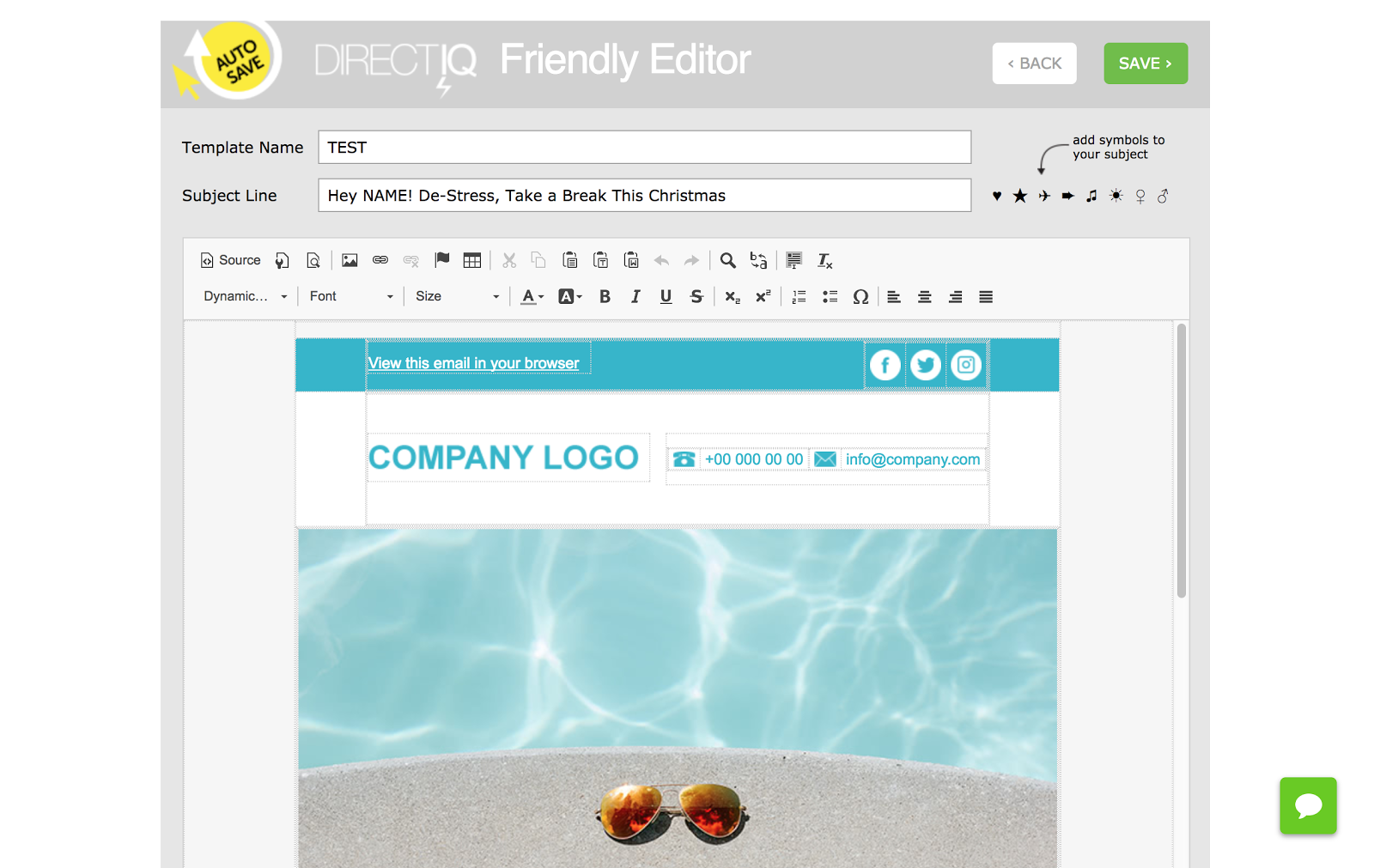 (Source: Author’s screenshot)2. Open the drop-down box labeled ?Dynamic.? You will find different codes which you can copy to insert different information from your mailing lists into parts of your email.
(Source: Author’s screenshot)2. Open the drop-down box labeled ?Dynamic.? You will find different codes which you can copy to insert different information from your mailing lists into parts of your email.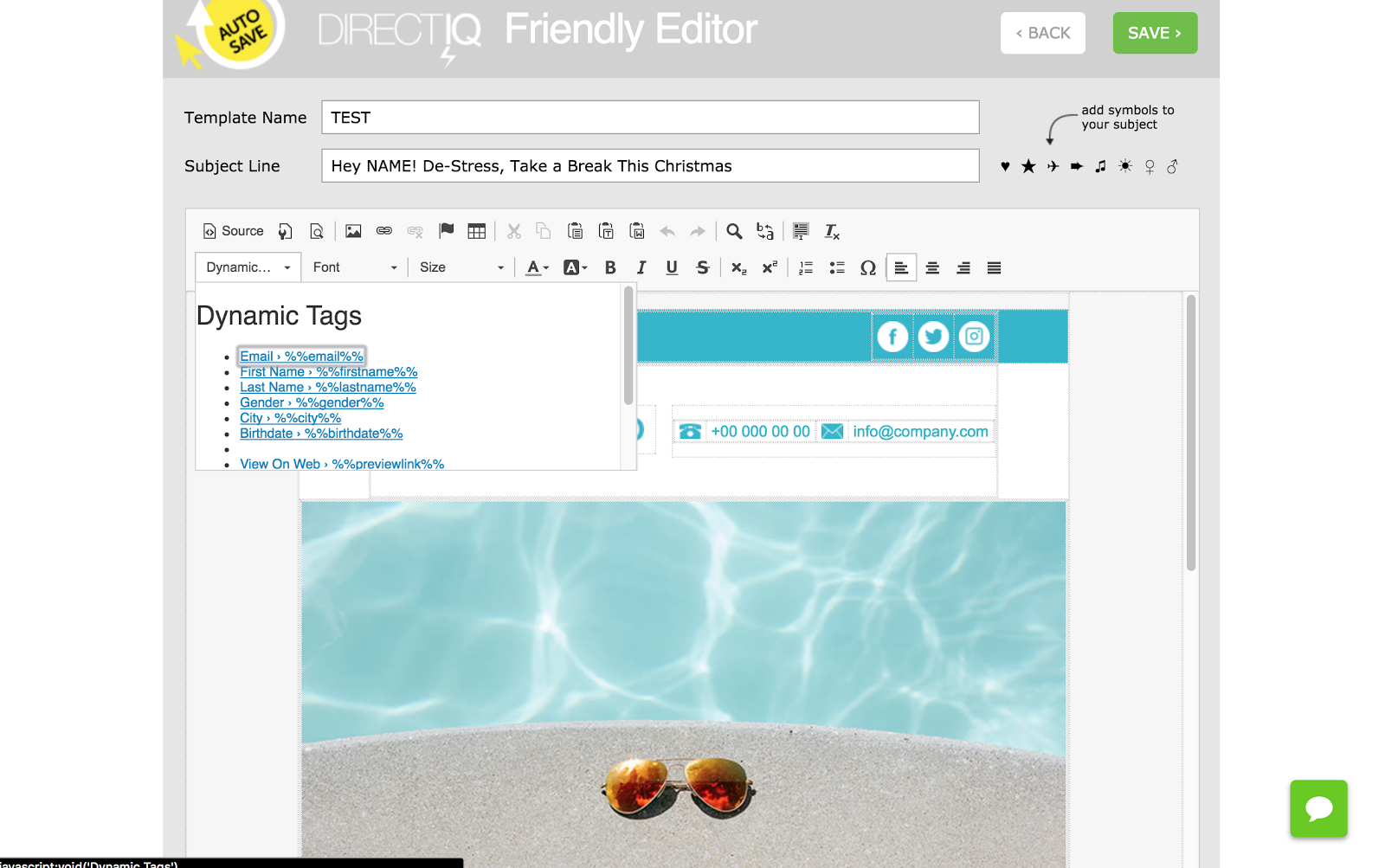 (Source: Author’s screenshot)3. Copy and paste the relevant codes into your email and subject line to be filled with customer data when you send the campaign out. For example, %%firstname%% would be replaced with the names of your recipients.
(Source: Author’s screenshot)3. Copy and paste the relevant codes into your email and subject line to be filled with customer data when you send the campaign out. For example, %%firstname%% would be replaced with the names of your recipients.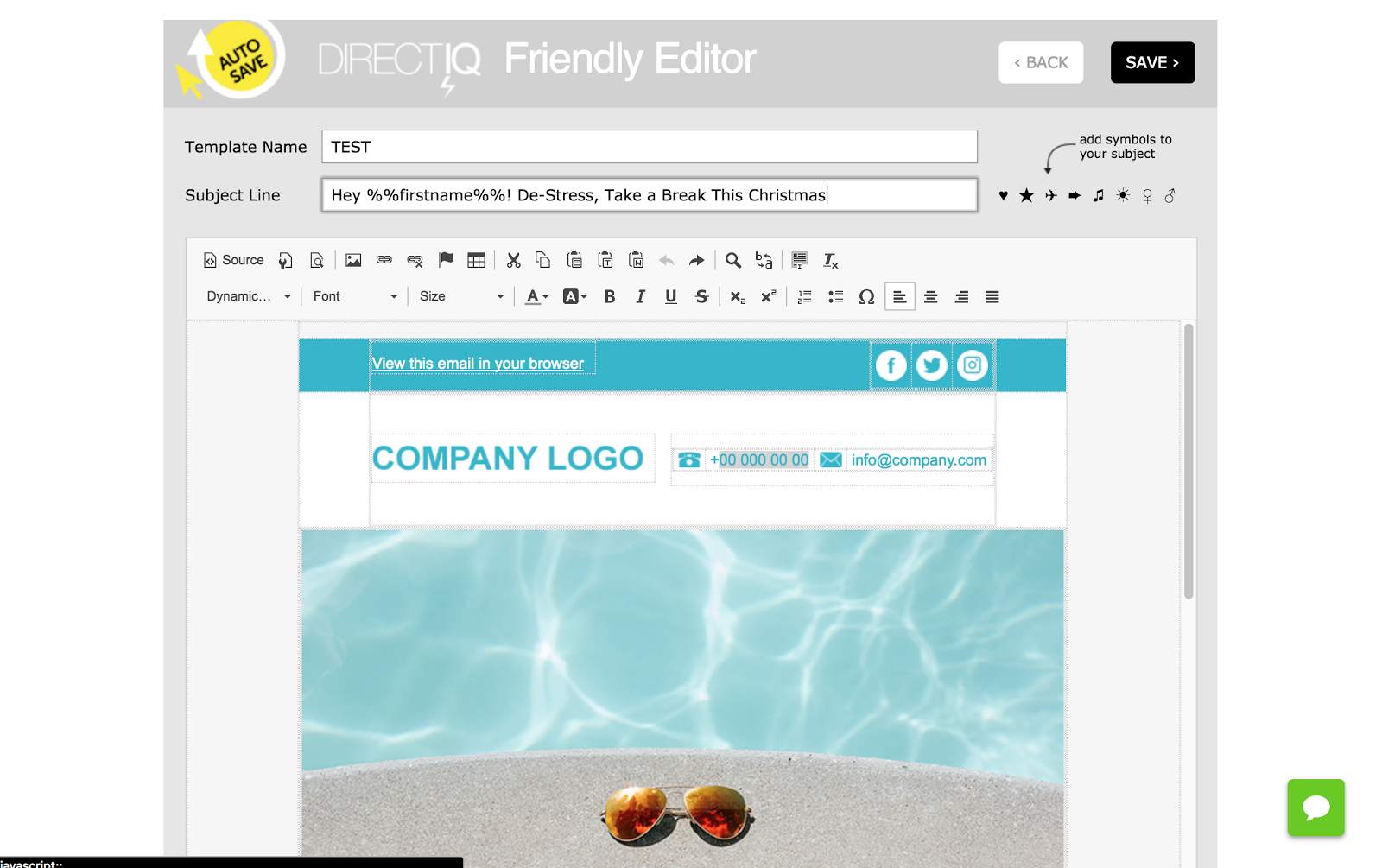 (Source: Author’s screenshot)
(Source: Author’s screenshot)
Conclusion
Nothing beats some good old fashioned honesty. Don?t think that your subject lines can?t just tell your readers ?how it is.?With DirectIQ you can segment your mailing list to send highly targeted emails to distinct groups of your subscribers. If you are already sending your subscribers content that is highly relevant to them, tell them.But sometimes you do need to send offers, discounts, goodies, and content that your subscribers will need an incentive to engage with. Sometimes they need a little convincing. Your subject line can achieve this goal as well as tell your customers what kind of company you are.Use the examples and the understanding of subject line creation you now have, to craft eye-catching, intriguing, curious, and personalized subject lines and you could get those open-rates skyrocketing. Go forward with the recognition that how you write your subject lines matters. You will get better opens, more clicks, and better engaged customers for your business to thrive.








